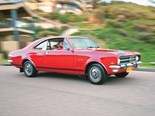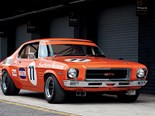1969 HDT HT 350 Monaro GTS Racer
.jpg)
.jpg)
.jpg)
.jpg)
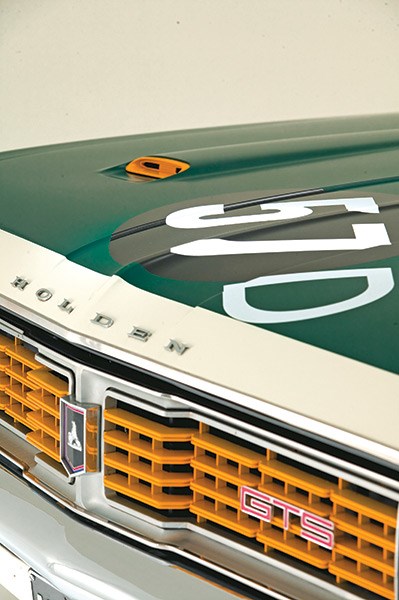


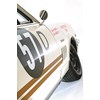
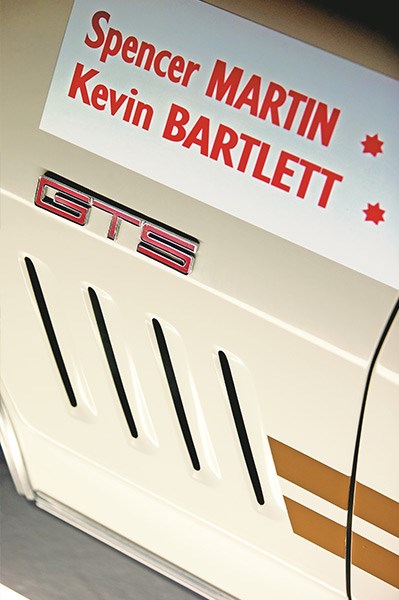

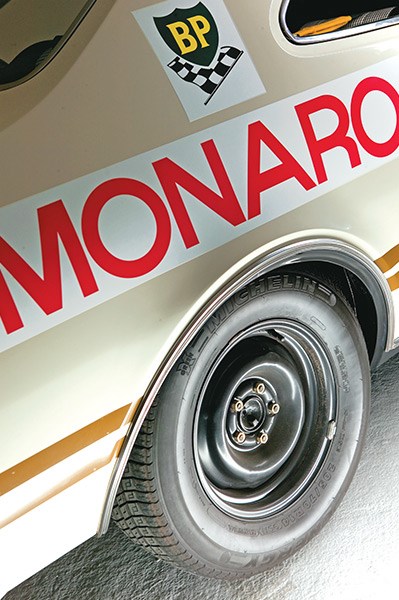

.jpg)
.jpg)

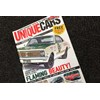
.jpg)
|
.jpg)
|

|

|

|

|
.jpg)
|

|
HDT's first Monaro failed in its only race but was the car that led to Bathurst glory
From Unique Cars issue #274, June/July 2009
HOLDEN HDT MONARO
It was a miserable day at Sandown, September 21, 1969. And for Holden fans it wasn’t just the near freezing weather. The crowd of 22,000 witnessed a Ford whitewash. But worse, with Bathurst quickly approaching there was obviously something very wrong with their Monaro hero car – one of which very nearly ended up in a fiery grave.
The ‘Datsun Three Hour Race’ held that Sunday saw the debut of the new Holden Dealer Team HT 350 Monaro – a thinly disguised factory entry – and the new man at the helm, one Harry Firth was keen to make an impression.
As it turned out the car made a lasting impression indeed but not one Holden would want to remember.
Thankfully the car in question survived a spectacular crash and now lives on in immaculate condition.
Drivers Kevin Bartlett and Spencer Martin had been contracted by Firth for the Sandown gig. Initially at practice the signs weren’t good. Martin/Bartlett set the fourth fastest time of 1:30.1 to be equal fourth – almost 4.0secs behind Allan Moffat’s HO Falcon and just a few tenths in front of the Fred Gibson/Bo Seton HO. In the second session however Martin/Bartlett improved their times down to 1:27.4 to secure a front-row spot alongside Moffat.
Bartlett had already finished second in the earlier ‘Victoria Trophy Race’ in his Mildren Alfa V8 open-wheeler behind John Harvey that day so Firth put Martin in the hot seat for the beginning of the touring car race.
Initially holding down second place behind Moffat, Martin was passed by Gibson at the 12min mark and admits he had his work cut out just keeping up with the fast Fords.
With Moffat (partnered with John French) and Gibson motoring along supreme in their HOs and Martin in third the race seemed a formality – until about 45mins into the event when Martin had a terrible crash in the Monaro.
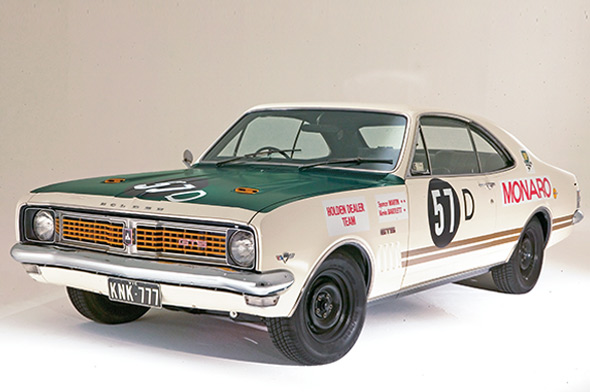
In his race report for Racing Car News Adrian Ryan described the crash thus: 46½ mins: Drama with a capital ‘D’. Spencer Martin arrives at Shell with no brakes! He spins the car backwards into the Armco at almost 100mph. The car leaps into the air, turns round and crashes down on the access road, then bursts into a roaring inferno as the burst petrol tank feeds 15 gallons or so into the fire. Spencer shoots out the driver’s-side window, unhurt. The ‘Women for Wheels’ crash crew are there within seconds and douse the fire. Meanwhile, Bob Brown (Pacer) and Ron Simmonds (Cooper S) have spun at the same spot and the yellow is waving furiously.
Photos of the accident show the car to be crashed and burned but the damage was not serious and the car was hastily repaired, painted and on-sold by Campbell’s Holden by tender for the eventual selling price of $3205.
Cut to Tasmania’s Power from the Past event held at the end of April 2009. The historic race meet featured plenty of significant cars – Bobby Holden was fanging around in his 1979 Bathurst class-winning RS2000, John Goss’ 1975 XB GT Falcon was there as was Brock’s 1972 Bathurst-winning HDT XU-1.
But it was our featured 1969 HDT GTS 350 HT Monaro that really caught Unique Cars’ eye. Why? This coupe was the ‘crash’ car and the beginning of the Holden Dealer Team legend. Little used for over 30 years current owner Rob Coulson chose the Tasmanian event to unveil and demonstrate the special Monaro for the first time after its recent sympathetic restoration.
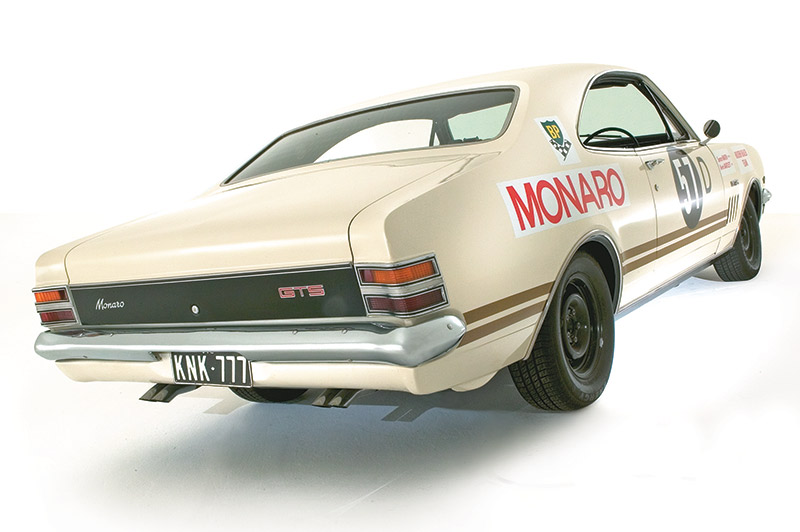
But it’s a car’s history that makes it special today – so back to the past.
"(Holden) thought I was a Ford man," recalls HDT Manager from 1969-’77, Harry Firth. "They didn’t let me have any input (with the HT 350) at all until the closing stages of production. I told them that had to stop straight away.
"Engineering had ordered four 350 engines race-prepared in the US by Chevrolet which they wore out testing on the dyno at 220hp. So (Ian Tate and I) had a local version (built) to our blue print ideas. (We) put it on the same dyno (and it gave) 244hp. They said we had cheated and tried to destroy it running it again after we had left.
"This engine was put in a practice car with standard paint to be used at Sandown. There was one problem (with the car) – (there were) no dust shields on the discs (and) no 1968 slotted wheels and no air ducts."
Firth is similarly not complimentary of his charges. "I had been told to use racing drivers and Kev Bartlett and Spencer Martin accepted. (But) I could drive the car faster than they (did). Kev was doing 1.40-1.42secs in private practice. (He) couldn’t be told so I sat him in the passenger’s seat with a watch – and no crash helmet – and demonstrated what you did.

"I did 1.38secs with no helmet, not taking any chances and (my driving) was obviously far kinder to the brakes. These drivers put their foot on the brake right down to the corner (at Sandown) plus revved the engine to 5500rpm-plus disregarding the fact that the torque curve was 2000-4500rpm."
The Bartlett/Martin team obviously made amends at Sandown though posting a respectable time and landing a front-row starting position.
"(Bartlett and Martin) just could not accept (my) way of driving so in the race it ran out of brakes at the end of the front straight. (There was) consternation in the GM camp – a witch hunt (ensued).
"I said ‘stuff all this, now give me the engines, come to Calder mid-week, take the dust shields off and put back the slotted wheels’. We fitted a front spoiler with air slots (and we) cut away panels behind the front bumpers (for) more airflow so the car would survive Bathurst."
Like a Phoenix, HDT rose from the ashes to win the Big One. "The (Bathurst) race is history. (We came) first, third and sixth," says Firth in summation.
Then HDT engine man Ian Tate agrees. "The failure at Sandown allowed us to win Bathurst," he says unequivocally. "Without that failure we wouldn’t have done all the checking and analysis that allowed us to improve the car."
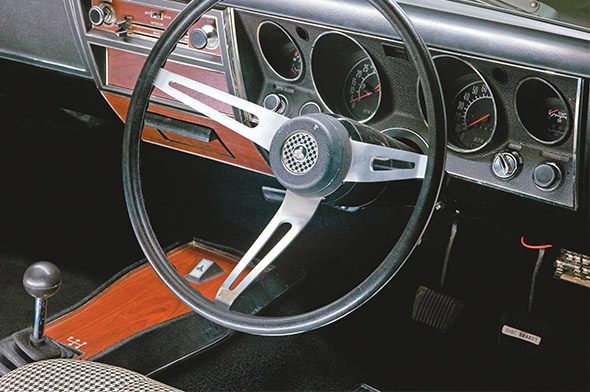
As will be evident there are various theories about the crash – Firth’s being unsympathetic driving on the part of Martin – Bartlett didn’t get a chance to drive the car during the race.
Tate insists that the brake fluid boiled. "(It’s) as simple as that because an hour after the race when the fluid had cooled down we had a brake pedal again. By the way, we knew we weren’t going to get through the race on the pads we had – we had already worked that out."
Kevin Bartlett’s memory of that fateful race meet is clear. "That car was a bit fresh," he recalls. "Harry was still experimenting a bit with it. I was racing open-wheel cars at Sandown on the day so it was convenient for me to drive it to get some feedback. (The drive) was only ever going to be a one-off.
"The failure, as explained to me was in the power brake system when Spencer was driving it on the main straight. He very skillfully turned the car around and it went into the wall backwards and burst into flames. He was a very good driver – very switched on. I was told it was the booster system itself – not the brake pads.
"I was not privy to the post-race inspection so I don’t know for sure. But I doubt it was the pads as when they go they give some indication that they are going and you start to compensate for them. In the Sandown event it was a catastrophic failure of the brakes."
Spencer Martin had retired from racing open-wheelers by the time of the Sandown drive having married the previous year and was now with a pregnant wife.
"Harry rang and asked if I wanted the drive," he begins. "(My wife and I) thought that driving a Monaro around Sandown would be quite safe – as it happened that day was a complete disaster.
"The brakes on those cars were always very skinny," he says. "Harry never told us what happened but many years later Frank Lowndes, the chief mechanic at the Dealer Team, told me that they had taken the standard pads off the Monaro and replaced them with harder pads for practice. But one of the mechanics accidentally put the standard pads back in the box marked ‘competition pads’. The mechanics then put them back onto the car."
Back to the race. "I was chasing Moffat in the 351 Falcon and was scratching just to hang on. The front pads had already worn out and the rear pads were wearing out as well. They eventually wore right down and the backing plate hit the discs, the brake fluid flashed and the brake pedal went straight into the floor.
"It’s amazing the strength you get at moments like those. As soon as I realised what happened I put it into third gear. I did it so hard that it drove a gear right through the synchro. I didn’t want to go into the Armco front-on so I grabbed the umbrella handbrake and pulled it right off the dash. I managed to flick the car around and I went backwards through the Armco. The muffler went straight through the petrol tank and they had probably the biggest fire ever at Sandown.
"The accident concertinaed the car together jamming the door (shut) so I jumped out of the (driver’s) window and landed on my hands and knees. It was so hot I was certain that I was on fire. But I was taken straight to first aid to be checked out and I had no injuries.
"When I got back to the pits Harry asked me what had happened. I told him that I thought I’d blown a rear cylinder. But he went and checked out the car and came back and said: "That’s not the reason." In other words he thought it was my fault.
"(Despite the accident) I was booked to do the drive at Bathurst in the Monaro. But about a week after my crash at Sandown I had a bad accident, crushing a vertebra, driving with my brother so (Tony) Roberts got the drive. It may have been a blessing in disguise.
"It was my decision to retire. But my pregnant wife was there that day and I had seen plenty of wives leave the racetrack without their husbands."
Owner for 28 years Tony Connolly bought our featured car back in March 1970. Working as GM-H’s NSW metropolitan sales manager at the time he heard about the tender, put in a bid and got the car for $3205.
"I was there at the race watching from the stands," Tony recalls. "It was repaired and repainted. During the refurbishment they removed the engine – it had only done 700miles – and took out the race bits. I drove the car for one year but then I was given a company car so the Monaro sat in the garage and I did the odd club race at Sandown, Winton and hillclimbs like Rob Roy. It was a registered car when I bought it but I registered it as a new car – hence the change in registration plates.
"Castrol did a film on the 10 years of the Monaro and Torana before they started racing Commodores. Brock drove (my car) at Bathurst (in the film) and they painted it up as his Bathurst car in the team colours with the stripes."
The car was also used in a parade around Bathurst in 1979 with (motoring writer) Bill Tuckey at the wheel, appeared in Wheels the same year in a test alongside a Torana and in 1998 it was used in the Classic Adelaide Rally with Colin Bond at the wheel.
"Holden invited me to show the car at the Holden 50th Anniversary at Fishermans Bend in (late) 1998. Rob Coulson and his old man came up to me with their tongues hanging out and they bought the car at the event.
"It was a wonderful jigger when new. I bought it with only 700miles on the clock and I put on 19,000. I can honestly say most of those were put on Sundays – it was very original."
After the purchase Coulson proceeded to undertake a sympathetic restoration. He’s now trying to trace as much of the history as possible and as only the second owner the job hasn’t been that hard.
"As soon as I set eyes on it tingles went up my back," says Coulson. "I didn’t think any of (the HDT cars) existed. I thought this was the Bathurst car because of the livery it was painted in from the movie in 1979.
"We looked at the car and it was in pretty good order except the paint was down in condition. I didn’t think any more of it. I sat at home for a couple of days and then rang Tony up. He grilled me about what cars I had and what intentions I had if he sold me the car.
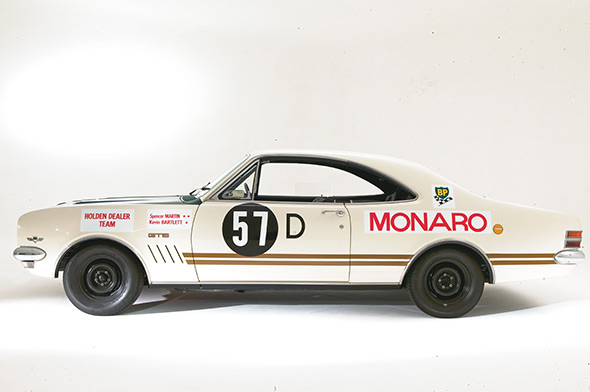
"I (said) I would restore the car back to exactly how it was the day it raced at Sandown. Tony informed me that the only reason he wanted to sell the car was that he was thinking of racing it again but because they had opened up the class he felt that he would have to soup-up the engine, improve the brakes etc to be competitive.
"I fell in love with it so I said to my father I didn’t care what it cost, I’d put myself into hock. I let dad do the negotiations and eventually we shook hands and did the deal.
"I was originally going to use it for my wedding in 2000. I took it out to Kieran Flynn’s and we took it apart and I thought I would paint it and get it back together in a few months. Well that didn’t happen. I was then advised to do a full nut and bolt restoration.
"Mechanically I didn’t have to do anything to the car – the engine, gearbox and rear end hasn’t been touched. The interior remained untouched – it was like a time capsule. The only thing I have done is steam clean the seats and I’ve replaced the damaged kick pads and headlining."
The initial advice Coulson was given – which he admits was probably wrong – was to give the car a full nut and bolt resto. "I restored it initially to preserve it so it didn’t deteriorate any further but I also wanted to bring it back to how it was when it first raced. I wanted to give the car and the Dealer Team the kudos for where it all started. It was the first car that they produced and raced and irrespective of what the result was that was their number one vehicle.
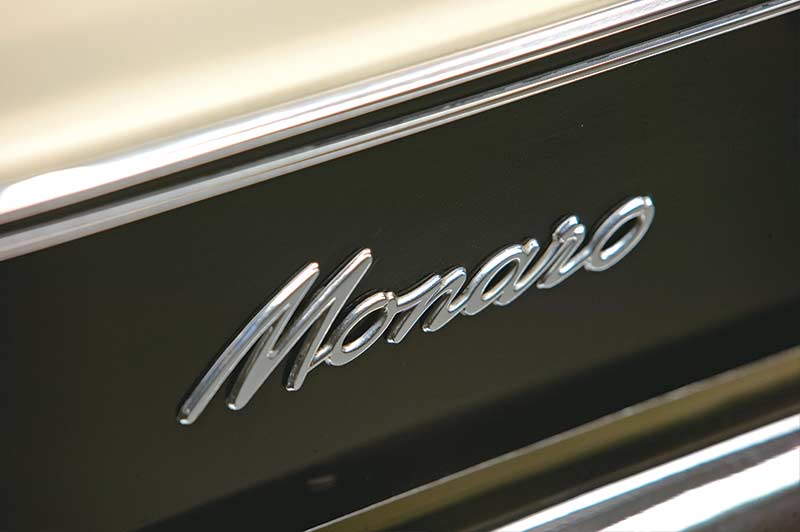
"If you go over the car there are a lot of tell-tale signs of the accident. The petrol tank has a couple of very big patches on it, the spare wheel well was crushed by the Armco and that has been pushed out, the rear muffler mounts were welded back to the underside of the car, there’s other damage on the inside of the boot that is still evident and the quarter panel was put back on the car in a rather crude fashion.
"I was under the impression that the engine in my car was original," says Coulson. "The original registration has the number of the engine that is in the car now. But I spoke to Frank Lowndes and he said that when they went back to the workshop they took the engine into the workshop and they broke the engine down because they wanted to see if there were any potential problems that might affect the Bathurst car.
"The rings on the car were starting to break down and they realised that if they ran those rings at Bathurst they might be in a bit of trouble. So they put the engine under the bench. When Phil Bartolo looked at my car he said that it was weird because it had a HG 350 Bathurst motor in it and I was gutted.
"But after speaking with Frank Lowndes and Ian Tate I have got over it. It was the motor that was put in by the Dealer Team and they put in a replacement motor. It’s a 350M block.
"I can’t remember where that engine went. I don’t recall us having a spare engine at Bathurst," admits Ian Tate. "That was a very good engine – it had the best horsepower we could get. Frank Lowndes did the head work on that engine."

"Victorian Monaro club member Chris Crawshaw painted the car and assisted me with assembly," continues Coulson. "Phil Bartolo had all the new/old parts needed to put the car back together again that were missing and Barry Pitman of Baron Signs did the sign writing."
Coulson is well aware he owns a special racing car. "Holden’s head honchos were at Sandown when the car crashed. They walked up to Harry and in no uncertain terms wanted to know what went wrong and wanted to know by Monday.
"They dragged the car back to the workshop. They used that actual car to homologate the Bathurst cars and applied to CAMS to homologate and re-introduce the slotted rims and also just behind the bumper bar, in line with where the brakes are, all of the Holden dealers were instructed to take a cold chisel and create a flap to allow airflow through. So every HT 350 manual after that car had those changes."
Rob has spoken with all the major protagonists in researching the car’s fascinating history. "What I really enjoy is that everyone concerned with the car said unequivocally that it was the car – absolutely 100 percent verified. It is an important part of Australian motor history and I’m happy to be its custodian."
Unique Cars magazine Value Guides
Sell your car for free right here
Get your monthly fix of news, reviews and stories on the greatest cars and minds in the automotive world.
Subscribe

.jpg)










